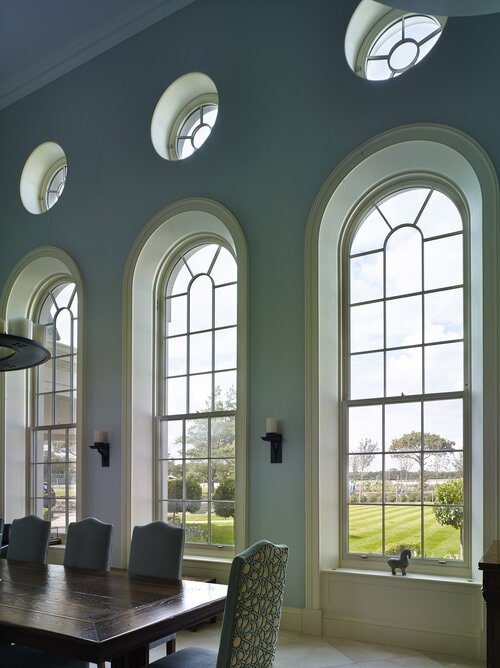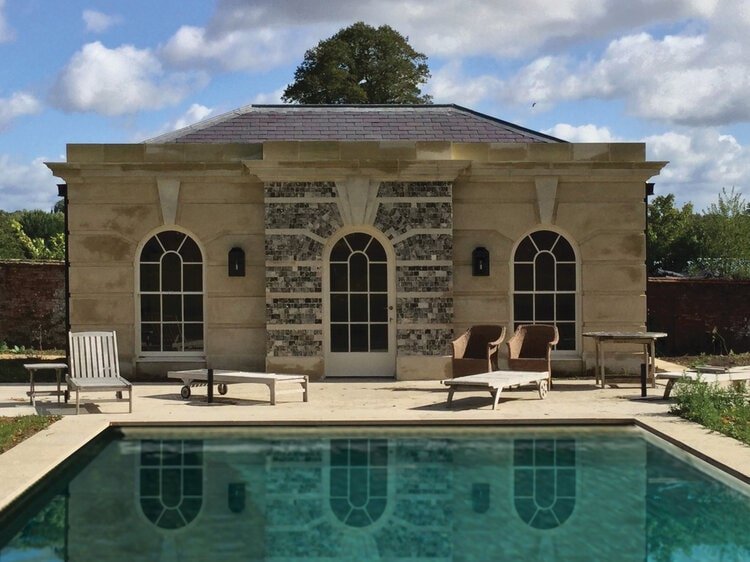The Georgian Group
No.1 Royal Crescent, Bath (Grade I) was built to the designs of John Wood the Younger in 1767 – 1774.
Our WOOLF Interior Architecture & Interior Architecture studio in Georgian Bath is surrounded by the most extraordinary and exquisite Georgian and Regency buildings. Every day we are reminded of the value and the importance of preserving the history of Georgian interior design and architecture; not only for the future of architecture but also to honour the integrity of our British architectural heritage, which is why WOOLF Interior Architecture & Interior Architecture supports the Georgian Group. In our role as interior designers and interior architects in Bath, we have an opportunity to restore beautiful historic Georgian buildings to their original grandeur, whilst being given the chance to add a contemporary twist for those who wish to combine the two. Explore WOOLF historic interiors.
Georgian interior design and architecture is incredibly inspiring and is a constant source of inspiration for our work. Uncovering the ways in which people lived in Georgian homes and used public spaces, is endlessly fascinating. We do live differently today and in order for our fantastic heritage assets to be preserved they need to move with times, yet retain their original grandeur and be brought into a contemporary context so that they can ‘exist in harmony’ with us as we live today.
The Georgian Group is a unique charity that promotes the protection but also the understanding and education of these wonderful buildings and landscapes. Membership is made up of individuals who are really passionate about Georgian interior design and architecture as well as experienced professionals who know the intrinsic value of our Georgian and Regency heritage. The excellent casework team bring brilliant architects, historians, researchers and crafts people together to ensure that our heritage is protected, and help enrich and further the understanding and preservation of these amazing British buildings in order to “look after the things we love.”
Georgian Interior Architecture.
Regency House Hampshire by ADAM Architecture.
Regency House Hampshire by ADAM Architecture.
The Bi-Annual Georgian Group magazine includes owners and investors in Georgian property, professionals working in the fields of art, architecture, conservation, curation, academia and law plus those interested in Georgian architecture, interior design, preservation, restoration and decoration of buildings.
We have found the library of research documents available to us, through our membership of The Georgian Group, to be an invaluable resource for our projects. Explore WOOLF historic interiors.
We particularly love the studies they publish on specific areas of Georgian interior design, such as ‘Georgian wallpaper’, ‘Georgian paint colours’ or types of authentic ‘Georgian mouldings’.
Most of our historic interior design briefs require us to recreate or restore the interiors of houses from the Georgian and Regency period. We also use the research published by the Georgian Group as a springboard for a contemporary revision of a period interior design, which may be more relevant to a current design scheme.
Dollar Street in Cirencester, restored by ADAM Architecture
Robbie Kerr is a colleague, prominent architect, director at ADAM Architecture, and Trustee of the Georgian Group.
ADAM Architecture have built their reputation on the ability to integrate a thorough understanding of the academic and practical implementation of the Classical language and the ‘long 18th century’, the period covered by the Georgian Group, which forms a vital part of the inspiration and knowledge behind their work.
For Robbie, there is such fundamental importance to the work he does for clients, in this understanding of the finer points that finesse good work and that which sits comfortably and naturally in this idiom.
Chettle House in Dorset, restored by ADAM Architecture.
Chettle House in Dorset, restored by ADAM Architecture, won the Georgian Group’s architectural awards in the category entitled ‘Restoration of a Georgian Country House’. The work carried out by ADAM Architecture director Hugh Petter stemmed from detailed historic research carried out by the practice. Dating from the second decade of the eighteenth century, Chettle House was built by the Smith brothers of Warwick, probably to the design of Thomas Archer.
The house was subdivided into residential apartments following the Second World War. The present owners have restored the house to a single residence with the help of ADAM Architecture. The body of the house has been restored and re-pointed, while the grounds have been landscaped in keeping with the house’s Georgian provenance. The research and understanding allowed the house to be transformed and given a new modern lease of life, whilst preserving and enhancing the historic importance of this house into a home.
Chettle House in Dorset, restored by ADAM Architecture.
“From the sensitive conversion and restoration of the Grade II* town houses at the heart of Cirencester, proposing the alteration from the historic damage of a previous office tenant back into much needed family homes, to the sensitive integration of a number of Georgian properties within Petworth to form a new hotel”
Robbie finds countless sources of inspiration and lessons from the work on these magnificent Georgian buildings. “At times the work on these buildings can reveal magnificent stories, often revealing work from earlier periods covered over by the tastes of the day.Sometimes it is only a modest intervention that is needed to unlock these buildings and done in the right way, with the right understanding it is possible to transform these houses into homes that can continue to be loved for another 200 years.”
Restoration and alterations to a Manor House in Hampshire by ADAM Architecture
Great Pulteney Street, Bath. Designed by the architect Thomas Baldwin, completed in 1789.
The History of the Georgian Group
The Georgian Group has a long history having been founded in 1937 by the journalist Douglas Goldring with the prime purpose of preserving the historic buildings and planned landscapes of the 18th and 19th centuries, in both England and Wales. It is a charity based organisation with two key objectives:
The first, is to ‘save from destruction or disfigurement Georgian buildings whether individually or as part of a group, monuments, parks and gardens of architectural and historic interest and, where necessary, encourage their appropriate repair or restoration and the protection and improvement of their setting’. The second, is to ‘stimulate public knowledge and appreciation of Georgian architecture and town planning; of Georgian taste as displayed in the applied arts design and craftsmanship, and its influence on later periods’.
Since 1971, the Georgian Group has been a national amenity society. Local Councils are required to consult the Group when consideration is being given to planning proposals to alter or demolish listed buildings dating, in whole or in part, from between 1700 and 1840. They act as a statutory consultee in the planning process in both England and Wales. The Georgian Group support architects and designers both commercial and those who are undertaking their own private projects. Explore WOOLF historic interiors.
Pulteney Bridge Bath, Designed by Robert Adam in a Palladian style.
The Group depends on its membership to carry out its work and warmly welcomes those with detailed knowledge to those that are just beginning to uncover the joys that can be found in Georgian architecture.
The Georgian Group is for organisations and individuals concerned for the future of a local building from the Georgian period and who are passionate, or even have a passing interest in protecting Georgian architecture and gardens, or want to participate as a member.
Watch Caroline Knight giving a short talk exploring the history and architecture of the late seventeenth-century Carshalton House, Surrey and its early eighteenth-century Water Tower, which houses among other things a fascinating Delft tile-lined plunge bath.











